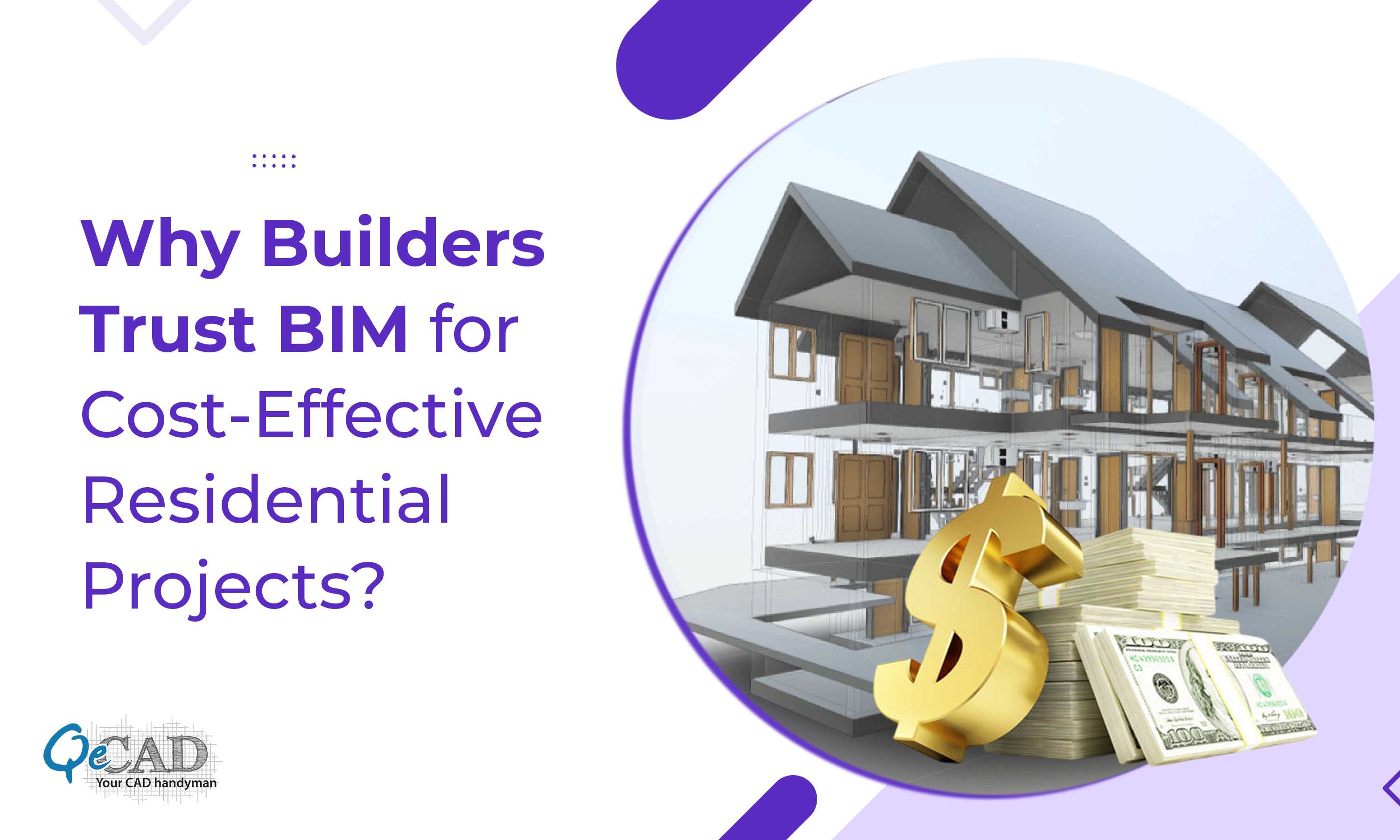
For residential builders and homeowners, financial forecasting plays a pivotal role in ensuring a project’s feasibility, profitability and timely completion. In today’s competitive construction market, where margins are tight and timelines are shorter, financial accuracy can make or break a home construction project. For homeowners, builders and developers, BIM is proving to be a game-changer—not just in design and execution, but in financial forecasting as well as budgeting.
By offering real-time data, automated quantity take-offs and 5D modeling, BIM enhances every stage of the cost planning. Let’s explore how BIM revolutionizes financial forecasting for home construction, helping the stakeholders to gain better control, reduce risks and optimize the resources.
What is BIM?
BIM is a collaborative digital process that integrates every element of a building’s lifecycle into a centralized 3D model. Unlike the traditional drawings, BIM carries intelligence about the quantities, material specs, time schedules along with the costs, enabling a data-rich environment for the hassle-free decision-making.
Why Financial Forecasting Matters in Home Construction?
According to a McKinsey report, large construction projects typically exceed their budgets by 80% and experience delays of around 20% beyond their planned schedules. For home construction, where budgets are often tight and personal, even a 10% deviation can have significant consequences.
How BIM Elevates Financial Forecasting?
- Automated & Accurate Quantity Take-Offs
BIM models calculate quantities directly from the 3D elements, reducing the manual estimation errors by up to 60%, according to Dodge Data & Analytics.
This improves initial budgeting accuracy and speeds up the preconstruction workflows.
When used with the Cost Estimation Services, these take-offs becomes the foundation for the data-backed financial projections.
- Real-Time Cost Estimation
Design changes? Material switch? With BIM, costs are recalculated instantly. This dynamic capability allows the project teams to assess the cost impacts on the fly and avoid any of the unpleasant surprises later.
BIM helps to maintain the budget integrity throughout the design development phase.
- Scenario-Based Cost Planning
Want to compare a wooden frame vs. a concrete shell? BIM enables the side-by-side scenario analysis for the design options and their respective cost implications.
Homeowners can make informed value-engineering decisions without compromising on the design intent.
- Clash Detection = Cost Avoidance
Studies shows that the clash detection using BIM can reduce the reworks by 40%, a major contributor to the budget overruns. Identifying interferences between the MEP, structural and architectural components early prevents the costly onsite revisions.
It ensures the project scope and the costs stays aligned.
- Integrated Scheduling & Costing (5D BIM)
By linking the cost data with the project timelines, 5D BIM helps to forecast the cash flow requirements and payment schedules, giving financial stakeholders a clear roadmap of the expenses over the time.
It is especially helpful for developers and financial institutions tracking down the disbursements.
- Lifecycle Cost Analysis
Home construction isn’t just about building—it’s about ownership. BIM enables the Lifecycle Cost Analysis (LCCA) by factoring in energy performance, maintenance and future replacements.
It helps the homeowners to assess not just the price tag, but the cost of living in and maintaining the home as well.
Real-World Case: 5D BIM in Saudi Residential Housing
A study published in Infrastructures (MDPI) analyzed a pilot application of the 5D BIM for mid-terrace housing in Saudi Arabia.
Key findings:
- The 5D BIM model enabled more accurate bill of quantities (BOQ) and cost appraisals.
- It revealed that the mid-terrace designs, compared to flats significantly reduced the land usage and construction costs.
This demonstrates the dual financial benefits of the quantitative accuracy and design optimization in the real residential BIM projects.
Broad Impact Stats from Recent Research
According to a comprehensive review of modern BIM case studies:
- BIM adoption led to an average of 15% cost reduction and 20% shorter project timelines.
- It also cuts down the design errors by 30% and RFIs by 25% thereby enhancing the cost predictability.
These results underscores the significant budgeting benefits of embracing BIM and Cost Estimation Services.
Why Choose BIM for Home Construction Forecasting?
- Transparent Bids – Builders offers the data-backed estimates
- Risk Reduction – Clash detection avoids the reworks
- Cost Control – Real-time updates = accurate tracking
- Better Funding Support – Financial institutions trusts the data-driven forecasting
- Smart Investments – Homeowners can factor in the lifecycle costs
Final Thoughts
BIM is no longer a luxury for the residential construction—it’s a necessity for anyone who wants the predictable, transparent and cost-effective homebuilding.
At QeCAD, we help you to leverage the BIM Outsourcing Services not just for the design and construction but also to build your financial roadmap with confidence. Our experienced team delivers the cost-accurate, clash-free models that keeps your project on track from start to finish.
Ready to transform your home construction budgeting with BIM? Let’s build smarter—together.
